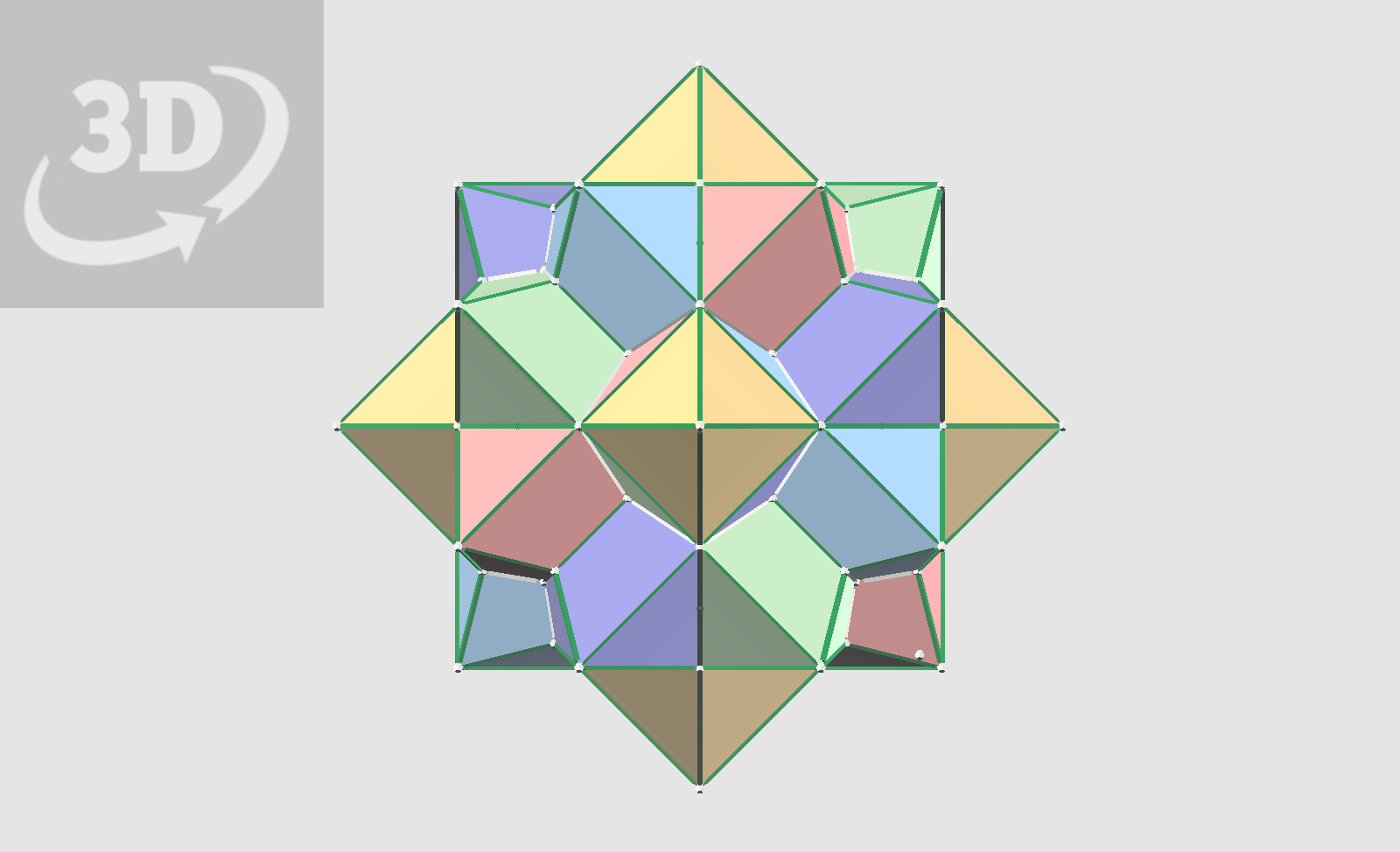An Octahedron is duplicated four ways by reflection. Each “twin” of the original shares the same center. Original is yellow. This can be seen as extending the planes of the original faces of the Octahedron to form hexagrams.
A 3D design created in vZome. Use your mouse or touch to interact.

Consider an Octahedron coincident with a Rhombic Dodecahedron. A plane that bisects the RD intersects 6 of the edges of the Octahedron at points 1/3 of their lengths.

This plane is used to reflect the Octahedron, producing a “twin.”

This reflection process can be carried out four ways from the original Octahedron. This shows a convex hull of the combination of five Octahedra.

Applying the same reflection procress to each of the “twins” generates a set of Octahedra that are symmetrically positioned, all sharing the same center. This shows a convex hull of the compound of twins and twins of twins.
